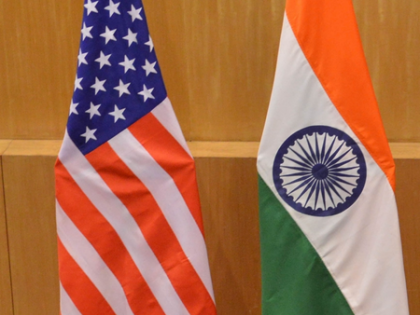US-India trade negotiations may see breakthrough by November end: Niti Aayog CEO
By IANS | Updated: November 7, 2025 16:55 IST2025-11-07T16:52:14+5:302025-11-07T16:55:17+5:30
Mumbai, Nov 7 NITI Aayog CEO B.V.R Subrahmanyam on Friday said that the ongoing US-India trade negotiations may ...

US-India trade negotiations may see breakthrough by November end: Niti Aayog CEO
Mumbai, Nov 7 NITI Aayog CEO B.V.R Subrahmanyam on Friday said that the ongoing US-India trade negotiations may see a breakthrough by the end of the month, adding that the country must lift its investment rate to 35–36 per cent of the GDP.
"Hopefully, by the end of the month, we may hear some news on that front,” he said at a media event here, adding that the negotiations are on track.
He said the National Manufacturing Mission will be operational by November, proposing sectoral clusters across 15 sectors and 75 locations to establish globally-competitive manufacturing hubs.
He opined that India needs to increase its investment rate to 35–36 per cent of the GDP each year to maintain growth of 8–9 per cent, up from the current rate of approximately 30–31 per cent.
India's economic growth positions it as the "brightest spot in the global economy," he said, adding that other nations will be forced to engage with India with its unique strengths of size, market depth, innovation capacity, and talent pool.
The NITI Aayog CEO emphasised the need for sustained openness, consistency in policy and a strong emphasis on skilling to achieve developed-nation status.
“Even if other nations impose tariffs, India must stay a world-class, open economy,” he said.
Subrahmanyam emphasised policy priorities, labelling the National Manufacturing Mission as the “biggest announcement in the last budget.”
Subrahmanyam stated that foreign investors are increasingly drawn to India's market and cost competitiveness. However, he cautioned that reducing bureaucracy is essential to enhance the ease of doing business, reiterating the principle of "minimum government, maximum governance."
“If I had just one rupee to invest, I’d put it on skilling and education,” he said, emphasising the importance of human capital. He pointed out that Indian students average six to seven years of schooling, compared to 13 to 14 years in South Korea.
Disclaimer: This post has been auto-published from an agency feed without any modifications to the text and has not been reviewed by an editor
Open in app